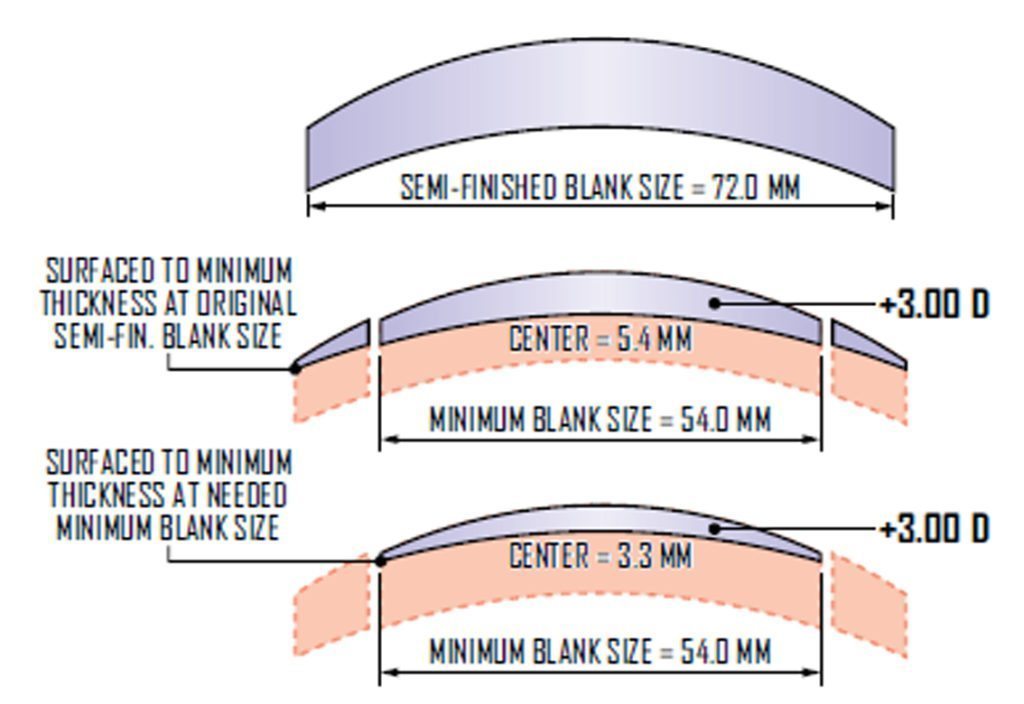Getting your first pair of glasses can be a time of mixed emotions for our patients. It can be particularly daunting for those patients with a higher prescription – one of the biggest concerns for these patients is that their lenses can be thick, heavy and uncomfortable if you don’t get the right advice. When talking about high prescriptions, you might have heard some foreign-sounding words like ‘high index’ and ‘aspheric lenses’.
Let us help you debunk the science behind thin lenses and understand the importance of personalising the selection of a lens and frame for each individual prescription.
To start, let’s look at the basic optics. The lenses in spectacles bend light so it focuses correctly at the back of the eye. The amount the light has to bend depends on the curve of the lens – the more power required, the steeper the curve of the lens surface has to be. For people with a higher prescription, the lenses will have a highly curved surface and as a result can be a lot thicker.
The lenses in spectacles bend light so it focuses correctly at the back of the eye. The amount the light has to bend depends on the curve of the lens – the more power required, the steeper the curve of the lens surface has to be. For people with a higher prescription, the lenses will have a highly curved surface and as a result can be a lot thicker.
Thankfully we have a number of ways we can keep the lens as thin as possible:
- High Index lenses: These lenses are made from specialised materials which allow the same strength of correction but with less curvature of the lens. This means high index lenses are thinner and lighter than standard lenses of the same power
- Careful frame selection: By selecting the right sized frame, the right shaped frame, or a quality acetate frame you will have the best outcome for your lenses.
Lenses in a smaller frame will be thinner and much lighter overall. Minimising the curve of the front of the frame will reduce distortions from the lens, while plastic frames are great at hiding the thick edges of lens for the best aesthetics possible.
- Aspheric lenses: This lens design that has a flatter front and back surface, hence reducing peripheral distortion to enable you to have more natural vision . If you have a high plus lens this lens design helps reduces magnification of your eye when people are looking at you making you feel less self-conscious.
- Ground Free-Form Lens: These lenses are specially ground and custom made to suit your eyes and the shape of the frame. They reduce peripheral distortion significantly and can help provide the thinnest possible lens design.
High powered prescriptions are traditionally thought of to be thick, heavy and unsightly, however with the latest technology and lenses from Nikon and Essilor, they no longer have to be. As dispensers and optometrists, perhaps the most challenging and rewarding part of our work is helping find solutions for our patients; helping keep lenses as thin and comfortable as possible is just one of many areas we can help you with.
For more information on eye health and eye conditions or to find your local Eyecare Plus optometrist visit: www.eyecarevision.com.au
About optometrists:
Optometrists are experts in vision care who diagnose, manage and treat a wide range of vision problems, eye diseases and ocular conditions. By prescribing spectacles, contact lenses, vision aids and other treatments, optometrists help their patients maximise and retain good vision for life.

